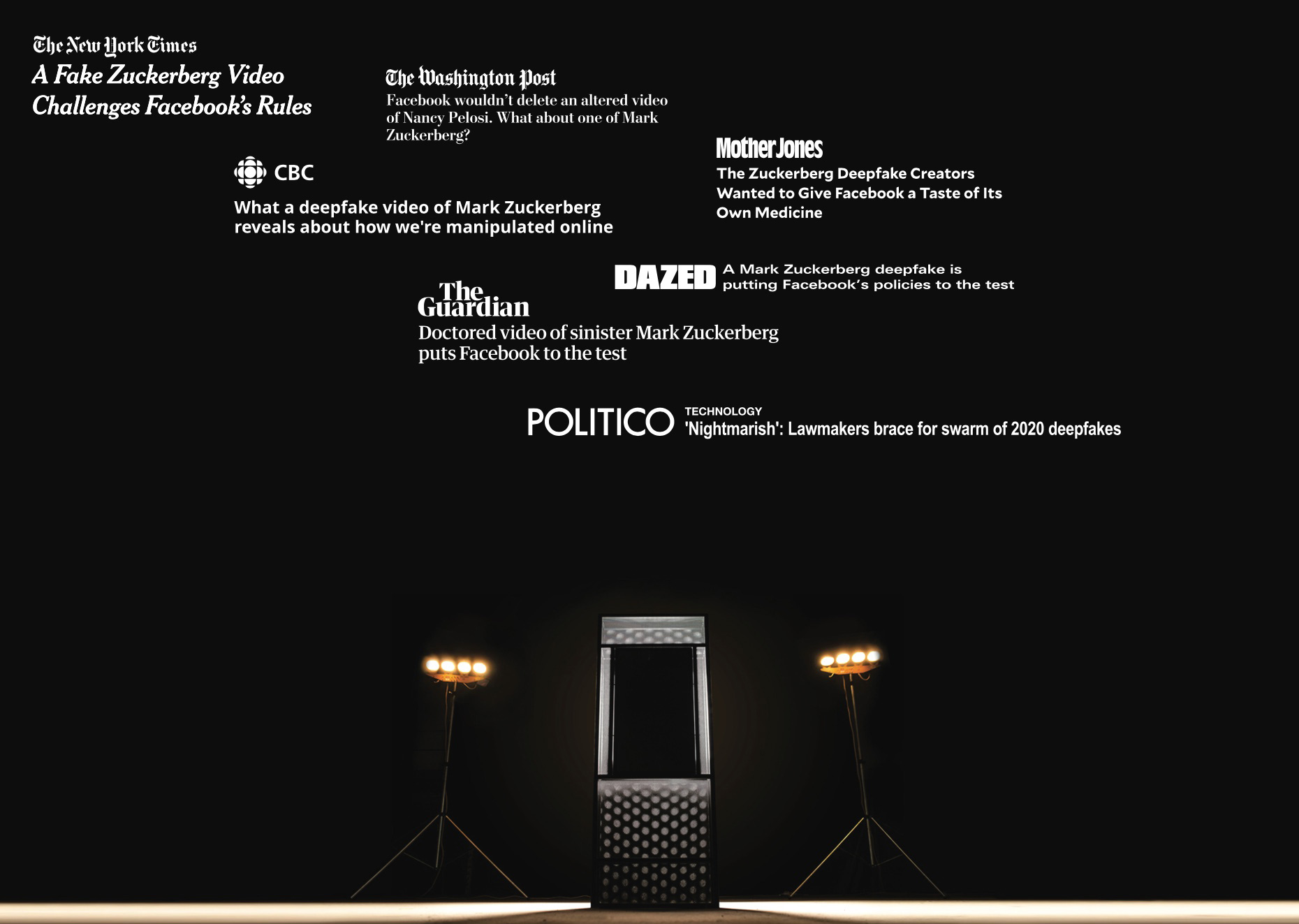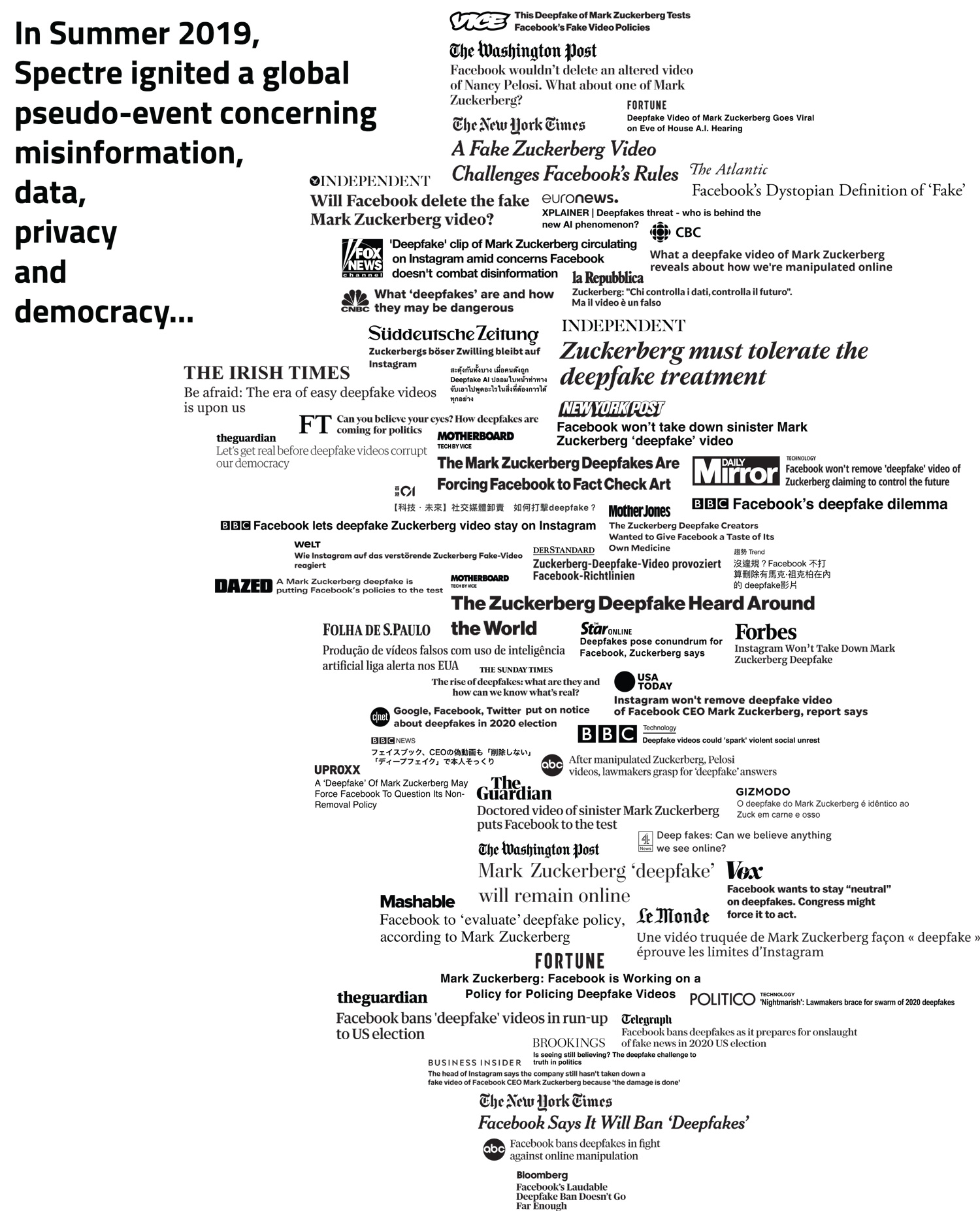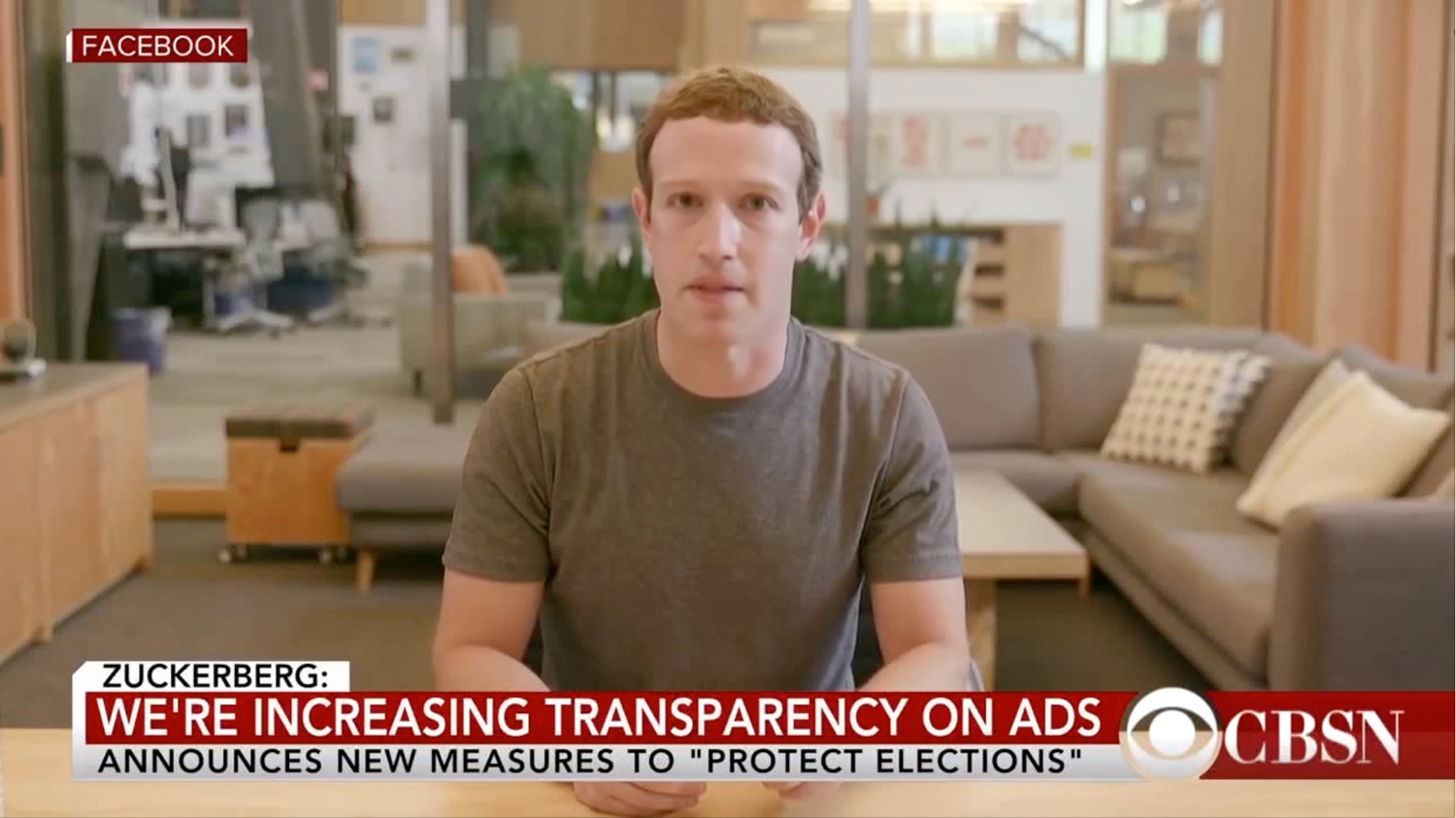NOTES: Synthetic Art: Re-Presentation In The Age Of The Hypernormal
It’s been a year to the day since I uploaded ‘Big Dada / Public Faces’ on Instagram as a digital intervention to try to highlight the lack of policies on Instagram concerning synthesized media (deepfakes) and the potential impacts of this media on notions of truth, privacy and democratic processes. The video was one of a series of 42 that were co-created with Daniel Howe as part of our award-winning Spectre project.
To mark the anniversary I am really pleased to announce that all the video art from the Spectre project has been acquired by the National Film & TV archive as part of their contemporary collection (you can read more about the acquisition here). Huge thanks to Mary and Will at the BFI for seeing the value in the works and for being willing to engage with new forms of moving image work. I also wanted to pause in this moment and reflect on the practice of creating synthetic art and some of the art theory that underpins it.
When this artwork was released on Instagram last year it seemed to encapsulate – and give form to – public concerns & fears relating to powerful new forms of technology (in this case AI and Machine Learning) and the potential impacts they can have on people’s perceptions of reality. The synthetic artworks went viral and became the focus of global press interest, first with New York Times and then Washington Post, BBC, Guardian, Spiegel. Le Monde, La Republica, Folha De S.Paulo and a quite frankly overwhelming amount more. The synthesised image of Mark Zuckerberg had caused a Boorstinian ‘pseudo-event’.

Psuedo-event or not, there appear to of been some tangible, concrete impacts which to an advocate artist like myself, helps bring meaning into the practice. The head of Instagram Adam Mosseri, when asked during an interview with CBS News if the video would now be taken down due to Instagram’s first policy on deep fakes he said ‘no, the damage has been done’. The fact that Facebook, Instagram and Youtube were forced to provide unexpected – and contradictory – official responses to the public cemented the feeling that the artwork had indeed trolled the largest tech company on the planet – and its founder, but more importantly played a tangible role in policy change at Facebook.
The video was later discussed at the Senate intelligence committee enquiry into deepfakes and according to Reuters news ‘the sophisticated manipulation of videos like these, which appear to show Facebook CEO Mark Zuckerberg saying something he did not, led to a European Union proposal to ban facial recognition use by government’.

Synthetic Art: Re-presentation In The Age Of The Hypernormal
“Re-presentation, not representation”
– Douglas Crimp
Synthetic art is a form of art that is created using synthetic media (deepfake) technologies and processes. All, or part of the output is comprised of synethetic data and the whilst my practice focuses on pioneering moving image based forms of synthetic art, it can also encompass forms of type, sound, and generative art.
Creating this kind of moving image work and video art is now a central part of my practice and I want to share some reflections on synthetic art and the theory behind the creation and development of it. By occupying a position of power, I am able to take the cultural obsession with celebrity and apply AI technologies that allow me to simulate the celebrity’s identity entirely in a fetishistic yet critical interrogation. Everyone wants to be the celebrity they are infactuated with. We are all, in some way or another: wannabes.
The concept for my synthetic art is clearly influenced by the Situationist theory of detournement but also by Pictures Generation artists and their interrogation of ‘the image world’. They often appropriated existing images and re-contextualized them to undermine their original intent, I am enjoying doing something similar with image today – but image in this case is comprised of, and best seen as, the biometric data of others: of influencers, both alive and dead.
Like all of my work before it ,the theme of power runs through these synthetic works – both the inherent power of celebrity image and the technologies of power (artificial intelligence and deep learning) that are used in the creation of the videos. Both collide the popular with the political in process and in final form. The power of the artist as puppeteer, clothed and disguised in the image of the celebrity and able to bend them at will is also a part of the practice that should not be overlooked or sit comfortably, especially as I myself am a white, male artist.

By synthesizing a new ‘public face’ for the celebrity that is shared and now visible to society, the fact that technical mediation has replaced the ‘real’ also creates a link to parts of Neo Geo / Simulationism practices that is worth exploring.
Baudrillard’s concept of hyperreality coined a state of modern consciousness distinguished by the inability to tell apart reality from simulation. Deepfakes give the artist the power to create complete simulations of situations. Could these videos, in the words of anthropologist Alexei Yurchak add to and help create the conditions that allow ‘the fakeness to become real’? To become ‘hypernormal’? If so then they would arguably help synthesise a simulacrum – a copy of a copy, raising important questions of authenticity and truth in the process.
“Man is least himself when he talks in his own person. Give him a mask, and he will tell you the truth”
– Oscar Wilde, The Critic as Artist (1891)
Perhaps the Dadaesque celebrity simulations also hold true to the surrealist style as they strips signs and symbols of their original meaning. I’m reminded of the words of Rene Magritte – “everything we see hides another thing and we always want to see what is hidden by what we see”. In the post-truth, hypernormal age we are living in, the synthesised video art form allows me to interrogate things, to try and ‘see what is hidden by what we see’ or in the words of contemporary artist Trevor Paglen ‘make the invisible visible’. The image, strictly, is a replica of reality. Magritte again knows this all to well as the basis for the work ‘The Treachery of Images’.
In a literal sense, we are experiencing a treachery of images more and more in the ‘image world’ of today. We are suffering the cognitive dissonance and absurdist confusion from witnessing images of leaders of major nations who appear to view reality in a completely different way to most other people on earth. Just think of the televised images of Trump’s psuedo-event press ‘rallies’ refering to 100,000 deaths of US citizens from Covid-19 as ‘a success’; Bolsonaro refusing to acknowledge the presence of a pathogen killing tens of thousands in Brazil; Black and brown protesters being labelled as ‘terrorists’ and ‘thugs’ all while ‘world leaders’ of prominent G20 economies promote conspiracy theories online. This is all in the last 21 days of writing these notes.
The absurdist list is indeed a long one and parallels can be drawn to the hypernormalisation that occured in the Soviet Union just prior to its collapse creating a not-necessarily-misplaced analogy for our present moment in time. It appears we are at comfort with illusions—not just in our cultural creations, but in our everyday lives. We are the prisoners of Plato’s cave and from simulation we enter into an age of synthesisation brought on by new ‘friendly’ technologies of power and ever more omnipresent hierarchies of knowledge.
